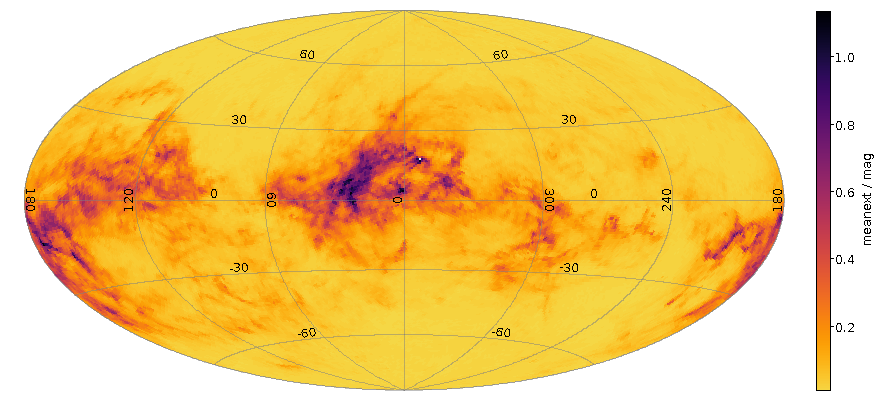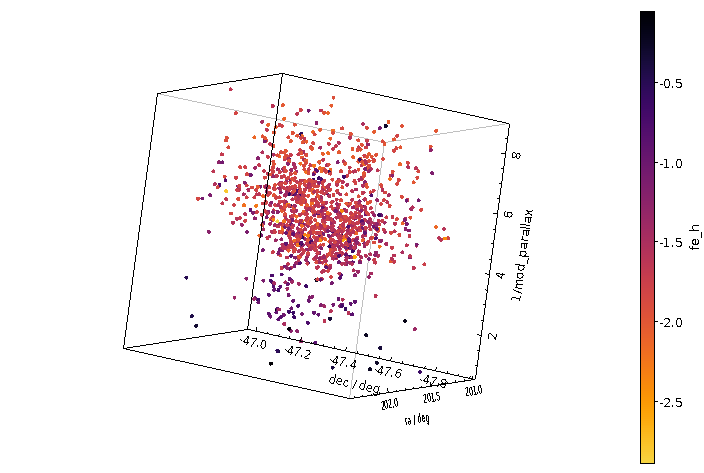Information on resource 'Parameters of 220 million stars from Gaia BP/RP (XP) spectra'
We present astrophysical parameters of 220 million stars, based on
Gaia XP spectra and near-infrared photometry from 2MASS and WISE.
Instead of using ab initio stellar models, we develop a data-driven
model of Gaia XP spectra as a function of the stellar parameters, with
a few straightforward built-in physical assumptions. This resource is
a VO re-publication of the resulting catalog of stellar parameters.
For bulk downloads, the covariances, the trained model, and more, see
https://zenodo.org/record/7811871.
Example: A Dust Map
As an example of what one can do with this data, consider the following
ADQL query to generate an all-sky extinction map for stars at
a distance between 400 pc and 600 pc:
select source_id/140737488355328 as hpx, avg(ext) as meanext
from xpparams.main
where
mod_parallax between 1.67 and 2.5
and quality_flags < 8
and mod_parallax/err_mod_parallax > 5
and err_ext < 0.2
group by hpx
This exploits the fact that Gaia source ids can be converted to
HEALPixes to produce a map and shows how to do useful quality cuts
that allow relatively careless use of the data.
If you use TOPCAT to execute this on the GAVO DC TAP service (select
Asynchronous mode and make sure you set Max Rows to something more than
50000, because that is how many pixels our map will have), you can
do a sphere plot, then add a Healpix control. In it, select the table
resulting from this query, manually set the HEALPix level to 6 and
configure the Axis to Aitoff projection in the Galactic system to
arrive at a plot like this:

Services defined within this resource descriptor
Tables defined within this resource descriptor
[Manage RD]
![[Operator logo]](/static/img/logo_medium.png)

